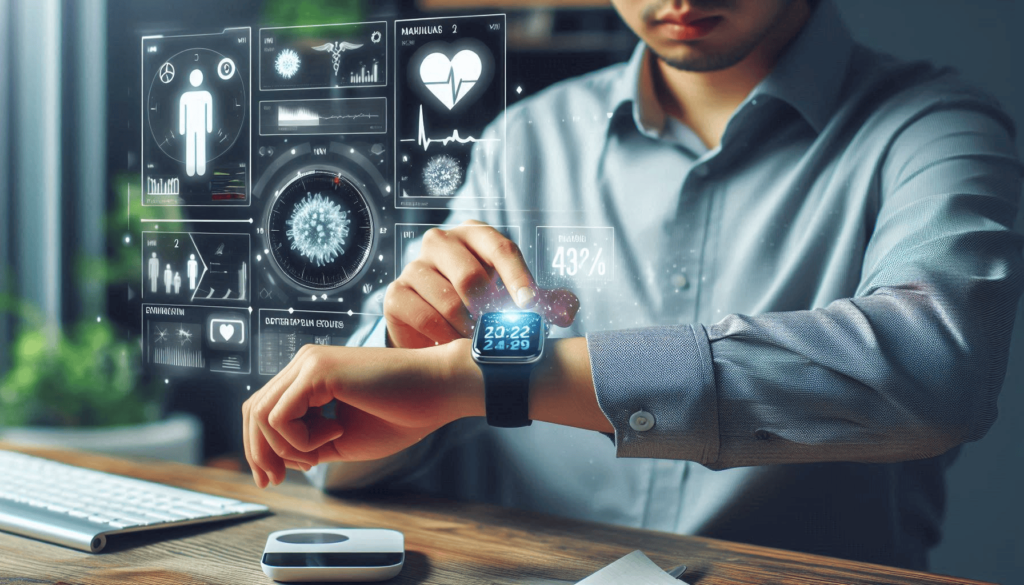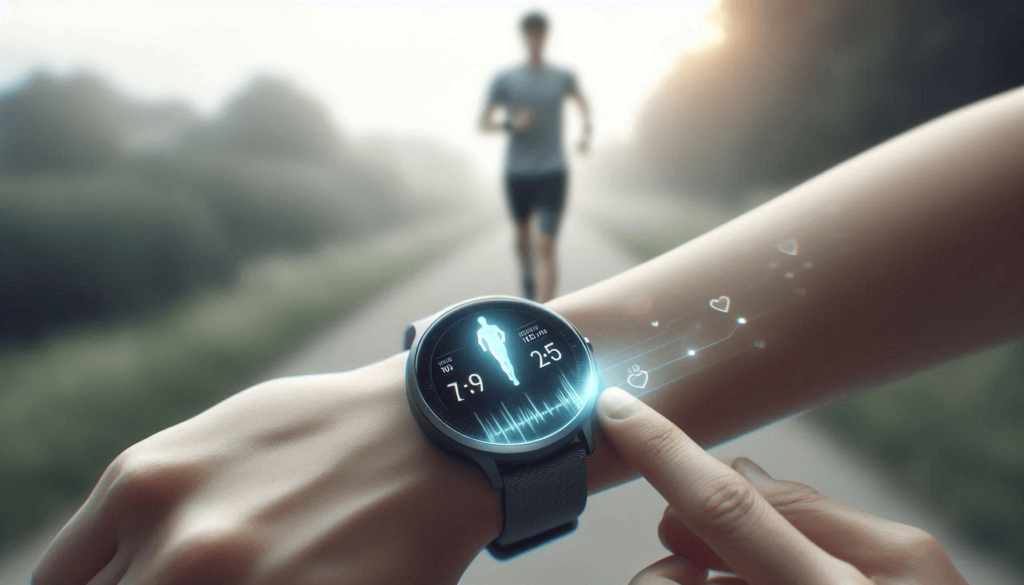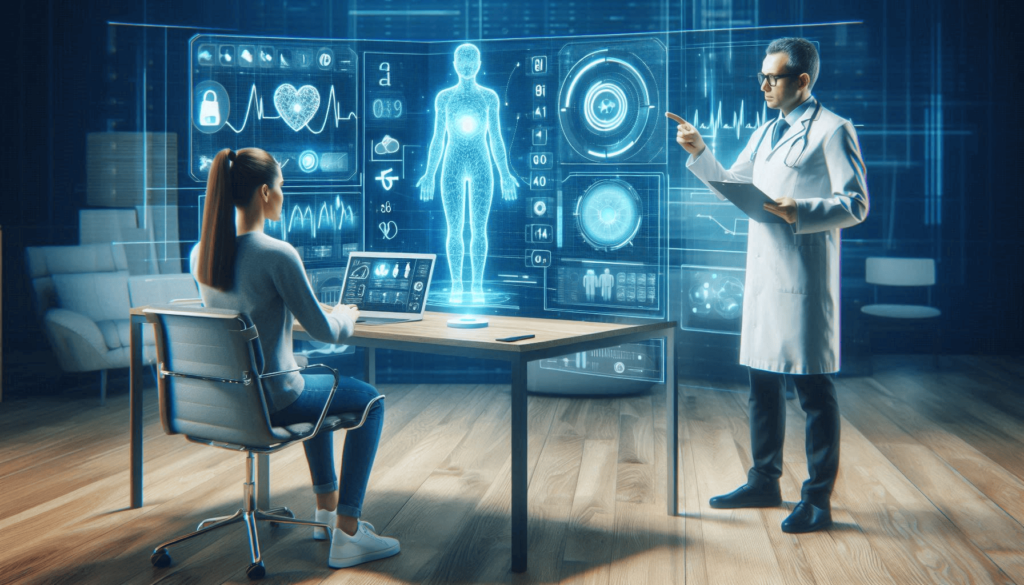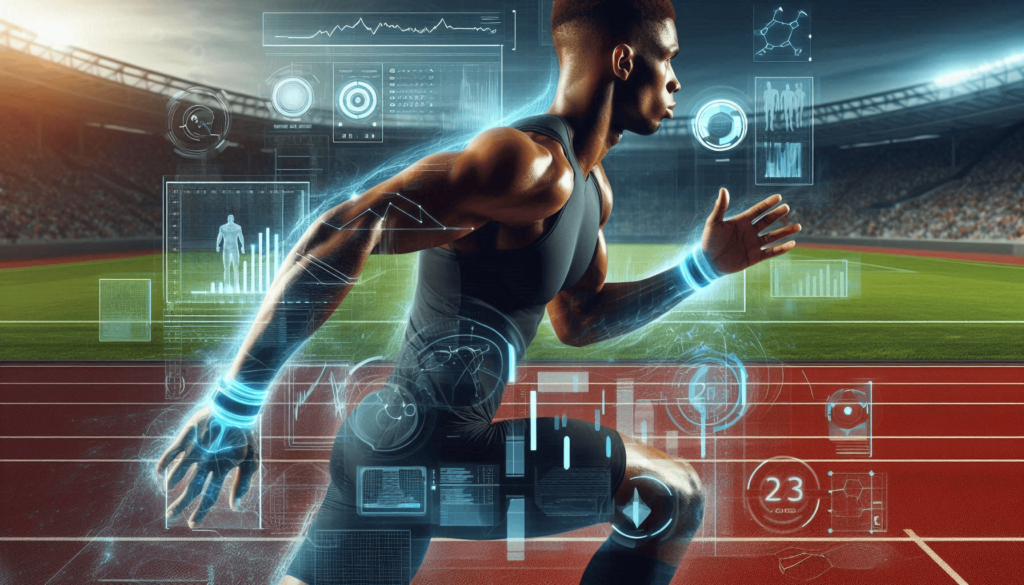With the emergence of AI in recent years, wearable technology has emerged as an important trend. This revolutionary technology has changed the way we interact with and use devices in our daily lives. From fitness trackers to smartwatches and beyond, these innovative gadgets have evolved rapidly. Which have provided better functionality and integration into various aspects of our lifestyle. Although the concept of wearable technology is several decades old, it has become better with the growth of AI.
Driven by the advancement of AI chips in 2024, we are likely to see significant technological innovation in the smart AI-powered wearable industry. Currently, the production and use of AI-powered wearable devices are at an all-time high as AI has improved its operational efficiency, and prices have also decreased. In this blog post, we will discuss the top 10 ways AI-powered wearables are changing health and fitness.

Table of Contents
ToggleReal-Time Health Monitoring
Continuous monitoring of health and fitness has become possible through AI-powered health-tracking devices. AI-powered wearables can continuously monitor vital signs like heart rate, blood pressure, blood oxygen levels, sleep patterns, and activity levels.
AI-powered wearable devices can prove to be a boon for patients who require constant observation. These devices are capable of providing real-time updates and interventions. Wearable devices and sensors equipped with AI technology continuously collect and monitor data in real-time, which helps AI algorithms to predict deviations in health parameters. Continuous monitoring may alert person to possible health concerns like heart attacks, which can be life-saving in an emergency.
Some sophisticated AI tools can monitor a patient’s health progress in real-time, allowing adjustments to base treatment plans as needed. Mention new AI features that enhance the accuracy and reliability of health insights. Devices like the Apple Watch and Fitbit help users make informed decisions about their health, fitness and wellness routines. These devices use machine learning algorithms to analyze health data.

Personalized Fitness Plans
Personal health and fitness tracking has become increasingly popular in recent years. There is a huge availability of AI-powered wearable devices in the market to monitor various health and fitness levels. People have become aware of them and the number of people using them has also increased. These tools can help users track their progress, set goals, and receive personalized feedback on their fitness performance, as well as provide customized recommendations based on their fitness goals and performance. An example of an AI-powered wearable device that offers personal fitness tracking is the Fitbit Versa.
In the fitness and wellness industry, AI-powered wearable devices are gaining popularity, mostly due to advanced data analytics, machine learning, and real-time monitoring capabilities. These gadgets may recommend personalized workout plans depending on a person’s age, weight, fitness level, and personal objectives. These AI-powered fitness apps work like virtual personal trainers by suggesting necessary changes to workout plans based on user feedback and performance data.
Some of the AI-powered applications can offer customized dietary recommendations and nutrition plans. To do this, they keep an eye on a person’s dietary preferences, health and fitness objectives, and nutritional needs. During exercises, AI-powered wearables, particularly when linked with an AI app, can give quick feedback on posture, speed, and technique. This quick feedback is comparable to having a personal trainer who ensures that the workouts are performed correctly. This lowers the danger of injury while increasing the efficacy of the workout.

Mental Health Tracking
According to a World Health Organization estimate, one out of every eight persons worldwide suffers from a mental disorder. Stress can be a major factor behind many mental illnesses. Most people with this disease control their mental illness with medication, counselling, or both. Technology can help people avoid or escape from this cycle of mental illness. Currently, several AI-powered wearable gadgets have been developed to deal with mental health issues.
These AI-powered devices can assist with not only mental health issues, but also sleep deprivation, rage, and impatience. These wearable gadgets take the shape of wristbands, headgear, and smartphone applications. These assist users in managing the mental and emotional symptoms of stress and anxiety using different techniques. These wearable gadgets detect signals from the brain and body and deliver feedback to the user to help manage symptoms. These devices have also been found beneficial in monitoring sleep patterns and managing them based on the feedback provided by the device. The gadget may also offer feedback to alleviate stress by understanding the reasons for it based on sleep patterns.
These AI-powered gadgets are also beneficial to healthcare providers and doctors since they allow them to better treat their patients depending on the data they collect. These gadgets are self-help tools that assist people in combating mental illnesses and empower them to take steps to improve themselves. As AI technology continues to develop, these tools will become even more advanced which will be beneficial to users and health care professionals alike.
AI apps for mental health offer a range of features and services such as cognitive training, meditation practice, chat-based therapy, etc. Examples include apps like Meru Health, Ginger, Woebot, Wysa, Headspace, and gadgets such as Apollo Neuro, FloVR, Fitbit, and Oura Ring.

Ergonomics and Posture Correction
Ergonomics refers to those practices by which efforts are made to increase the productivity of employees as well as reduce health-related problems. This includes making workplaces safe, convenient and comfortable, designing better products and systems, etc. The use of AI in ergonomic design can provide a data-driven approach that will be able to assess human factors, work demands, and environmental conditions.
AI-powered systems can be used to reduce musculoskeletal disorders in workers. Poor posture is an often overlooked threat to workers’ health and productivity in the workplace. These systems can identify risky postures and activities by analyzing video footage of workers in real-time. Wearable devices equipped with sensors and AI algorithms can be used to make the workplace even safer. These devices can provide workers with immediate feedback on activities that could potentially injure them.
Workers in factories are engaged in repetitive tasks. AI-powered ergonomics primarily uses computer vision to capture workers’ movements. Using this technique they provide predictive response by critically analyzing various events and activities.
AI can analyze historical data on workplace injuries and ergonomic assessments and identify high-risk areas. This predictive insight by the AI algorithm enables improvement through proactive intervention in those high-risk areas. Using AI-powered ergonomic solutions, it is feasible to increase productivity while keeping the wellness of employees in mind.

Sports Performance Optimization
Every player and athlete strives to perform his best in his sport. Even if you’re a casual jogger, you still want to perform well. In this fast-paced world of sports, athletes are constantly looking for ways to improve their performance. Players need to track and monitor their performance regularly in order to improve it. For this, players and coaches use a variety of approaches. Smart AI-powered wearables are proven to be a game changer in this domain.
These novel gadgets have transformed sports performance tracking. Their usage provides several benefits to athletes and trainers. Along with hard training, sportsmen use these technologies extensively to improve their performance. At present, technology plays a significant role in assisting athletes to achieve their maximum potential. Smart AI-powered wearables can not only capture data but also evaluate it and provide feedback to the athlete, which was unimaginable prior to the advancement of AI. Smart wearables can customize an athlete’s workout plan. This may also help him/her improve recovery time in case of injury.
Smart AI-powered wearables have revolutionized the way athletes train, recover, and even compete. These AI-powered wearables enable an athlete to attain more success than ever before. Apart from athletes, these gadgets are equally useful for bodybuilders as well as occasional exercisers who want to stay fit. These smart wearables are capable of providing customized solutions to suit the individual needs of the user. These allow for real-time performance tracking. It also allows you to track key matrices like heart rate, distance covered, and calories burnt. The quick feedback provided by these gadgets allows athletes to modify their efforts while training.
Conclusion
Artificial intelligence, along with computer vision and machine learning, is rapidly transforming the health and fitness business. The incorporation of this technology into fitness equipment, gadgets, wearables, and mobile applications is making them smarter. As a consequence, these gadgets assist people in maintaining their health and physical fitness.
AI-powered wearable technology is undoubtedly making patient monitoring and health tracking easier. These gadgets are no longer merely appliances; they are becoming an essential component of the user’s life. These AI-powered smart devices are monitoring the user’s health in real-time and providing appropriate feedback so that health complications can be avoided in the future.
With these smart devices, a patient’s health progress may be tracked, and the doctor can modify the underlying treatment plans as needed. These may be used to create tailored fitness routines, as well as food suggestions and nutrition plans. These gadgets will also play a significant role in preventing and treating mental illnesses. By using a data-driven approach, these smart tools can make the workplace more safe and convenient. Athletes can reach their best performance by practicing based on the feedback they receive from these smart devices.
This technology is incredible and is doing miracles in the fields of health and fitness, but it still has numerous flaws that must be solved. To make these smart devices more affordable, health-tech companies will need to reduce prices while also improving efficiency and data protection.

Pingback: AI Powered Mobile Cameras 2025: Redefining Photography
Pingback: How To Master Explore GPTs In ChatGPT: A Step-by-Step 2025 Guide
Pingback: Top Smart Home Assistants In 2025: Find The Best Fit!